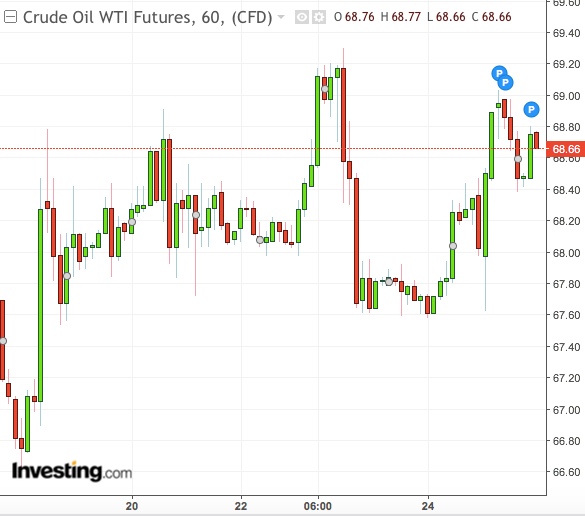The war of words between the US and Iran has been escalating in recent weeks, especially since the United States announced in May that it would be reinstating economic sanctions on Iran and enforcing secondary sanctions on entities that do business with Iran.
I have previously discussed the implications on market prices that would result from removing between 1 and 2 million barrels per day of Iranian oil exports from the market here and here. Over the past month the verbal sparring between Iran and the US has increased and even included threats to the safe and free transportation of all petroleum in the Persian Gulf region.
How much of this extreme rhetoric really represents a true risk to the oil market? The answer is—very little. Iran cannot truly block the Strait of Hormuz and the US does not have the stomach to go to war with Iran. However, this rhetoric still affects the market through speculative spikes and drops.
The Strait of Hormuz is a narrowing of the Persian Gulf. Ships coming from and going to parts of Saudi Arabia, UAE, Qatar, Bahrain, Kuwait, Iraq and Iran must traverse this passage to travel between the Persian Gulf and the Indian Ocean. At its narrowest, the Strait is 21 miles across but the shipping lanes are only 2 miles wide in either direction, and Iran sits on the northern side of the Strait. Only Saudi Arabia and Iran have alternative export terminals that do not require passing through the Strait of Hormuz, but according to the EIA, about 30% of all oil exported globally by sea travels through this Strait.
Since early July, Iran has been threatening to close the Strait of Hormuz to all shipping traffic if it is not permitted to sell its oil. Iranian president Hassan Rouhani first mentioned the possibility during a trip to Europe. The commander of the Iranian Revolutionary Guard Corps (IRGC) then followed up with a statement that his forces “will make the enemy understand that either everyone can use the Strait of Hormuz or no one.” Iranian President Hassan Rouhani renewed this threat on Sunday, prompting a strongly worded tweet from President Trump on Sunday night.

The price of WTI spiked about $1 per barrel (from $68 per barrel to $69 per barrel) on Monday morning, following the verbal spat between the two leaders, before almost immediately dropping back. This is a typical market reaction to an event or non-event that will have no real impact to actual oil supplies.
For Iran to block the Strait to all marine traffic, Iran would require ships capable of standing up to the US 5th Fleet, which is stationed in Bahrain for the express purpose of protecting transit through the Persian Gulf. Although Iran maintains two naval forces, one run by the Iranian Army and the other by the IRGC, their capabilities are not sufficient to challenge the US Navy. Iran also knows that if it tried to deploy forces to bother ships or blockade the sea passage, it could be stopped with the airpower of just one US aircraft carrier.
If Iran tries to hinder maritime transportation, especially of the vital oil commodity, the US will almost definitely respond. On the other hand, there is almost no likelihood that the United States will take military action in response to only words from the Iranian regime. Public opinion in the US would rebel against committing troops to another Middle East war, and the president acknowledged and supported the reticence to fight another war in the Middle East during his campaign two years ago.
The sentiments expressed on Twitter and in the media are not indicative of an actual risk to oil supplies, but in the end that is not what matters most to the oil market. What matters most is whether market, traders and speculators perceive this rhetoric as a risk to oil supplies.
As the two sides continue to make statements and occasional bluster, we will likely see more such spikes and drops—just long enough for speculators to take advantage.
